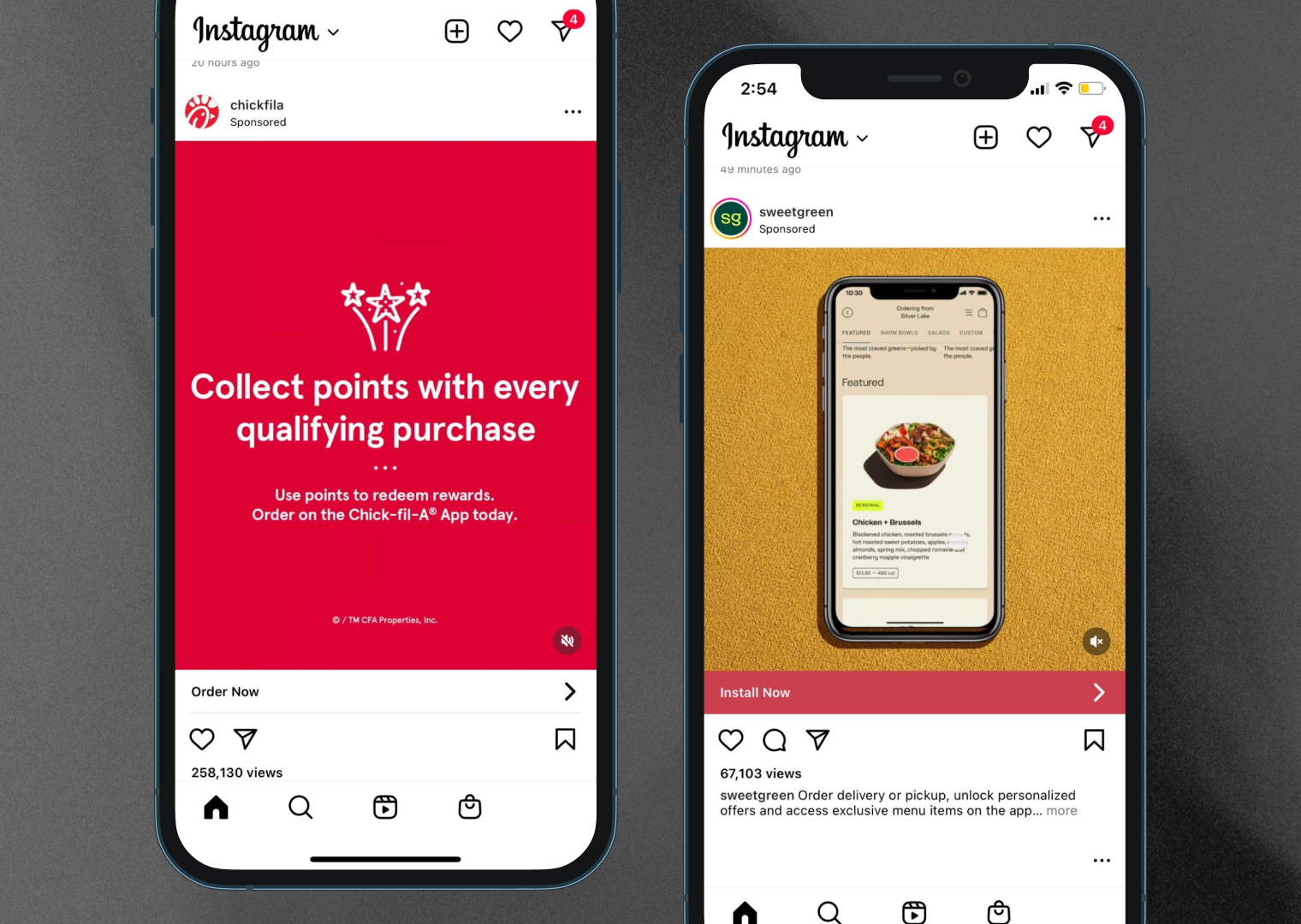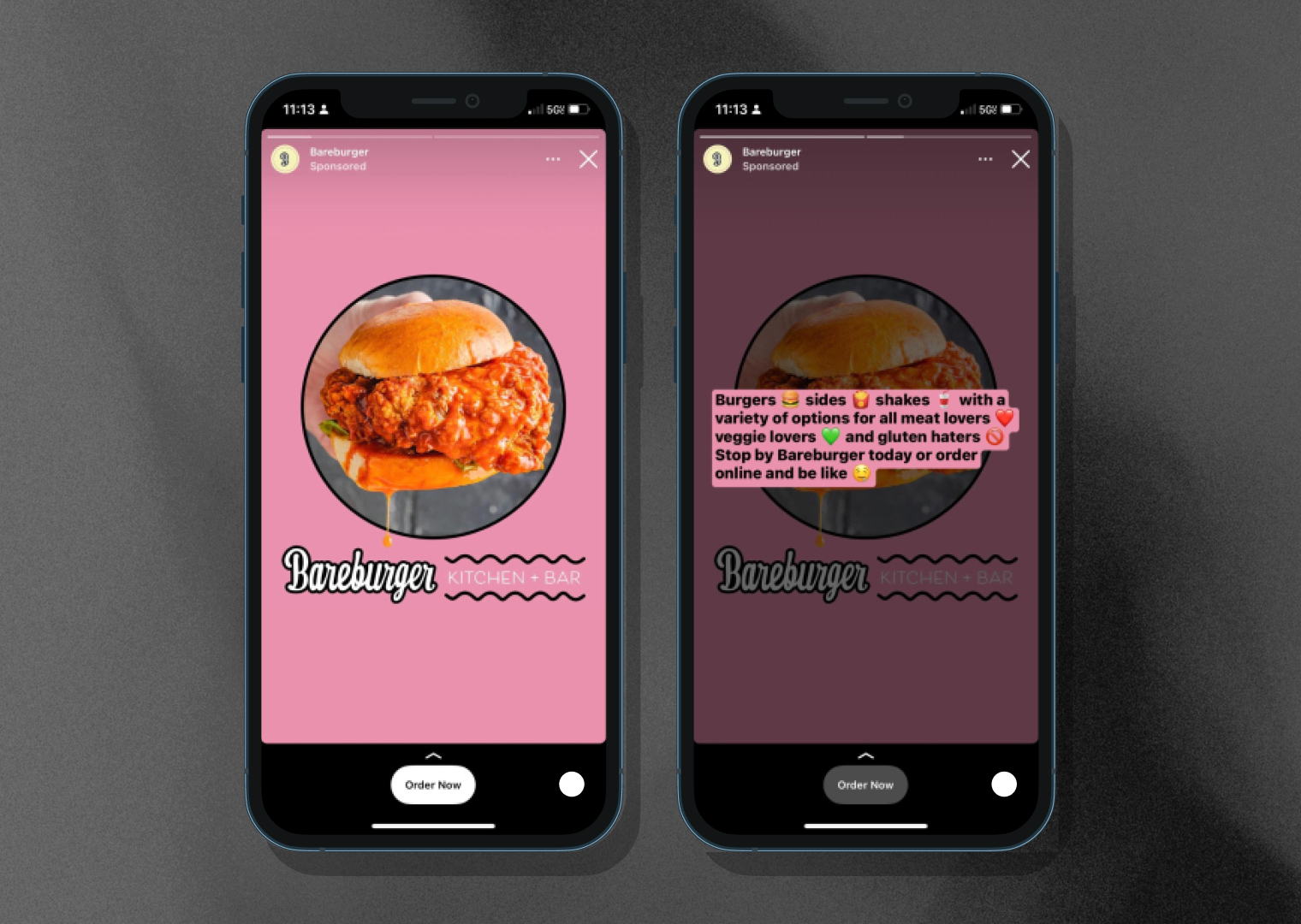Want to dive further into paid ads?
Check out our Top 5 Paid Ad Campaigns for Restaurant Marketing.
paid advertising
FEB 13, 2023
Share
Paid advertising is one of the most effective ways to market your business, and if done right can yield high ROI. When we talk about paid advertising, we are referring to the form of marketing where a business would allocate a monthly or one time budget to have their service or product pushed forward on various marketing channels, such as social media, Google search results, Youtube, or Yelp to name a few. Paid advertising allows businesses to reach a larger audience, as well as tailor which folks see your ads based on things like their age, location, and gender.
For restaurants, paid ads are an amazing tool to attract new guests, increase repeat orders from existing guests, advertise seasonal specials and promotions, and promote new store openings. As a marketer, you will be able to target based on specific interests (ex: you’re a vegan restaurant targeting folks who are specifically searching for vegan food on google), demographics, and segmentation criteria (like how many times they’ve ordered from your restaurant, or if they left an item unpurchased in their cart). By segmenting your guests properly, you can ensure that your ads are being seen only by folks who would find them valuable and you can rest knowing that your marketing dollars are not being wasted by putting an ad for burgers in front of a vegetarian.
In this article, we’ll walk through four examples of how restaurants can use paid advertising to help grow their business and attract new customers.
What is retargeting? This type of advertising allows you to advertise to folks who have previously landed on your website, or taken an action with your business like making a purchase, or enrolling in rewards programs. As marketers, we collect data from your digital patrons via cookies, which allows us to track their actions and then advertise to them across the other channels they interact with (facebook, instagram, google search, etc.). This form of advertising is an effective way to re-engage folks who have shown interest in your services or cuisine, but have not yet converted, or have converted and you’d like to get them to make a repeat purchase. These campaigns typically lend a higher ROI than net-new customer acquisition campaigns because we already know the customers we are advertising to have shown direct interest in your business before.

Retargeting campaigns can be run across all major ad networks – in the example above, we see a Sweetgreen and Chick-Fil-A running retargeting ads via the Instagram Feed, in this case with the goal of converting a web/in-store customer to an app and loyalty rewards member.
Pro Tip: use a software like Branch.io to deep link users directly to the proper app store. That way, your android and ios guests will automatically get routed to the coinciding app store.
A net-new customer acquisition campaign uses the data collected from existing patrons to advertise to audiences that have not yet made a purchase with or interacted with your business. New customer acquisition campaigns are designed to expand your reach and customer base, and get your brand in front of new eyes so you can grow your bottom line. Net-new customers are often harder won, and on average take a few additional brand impressions (brand impressions are how many times a person sees your logo) before making a purchase for the first time.

Net-New campaigns have to be eye catching, and for restaurants most commonly feature high quality, stylized food photography. When advertising to new guests, consider the fact that they may have never heard of you, seen your food, or know what variety of options you feature on your menu. As you’re designing the ad and copy, consider how you can educate new potential guests on what makes your restaurant unique, but in as few words as possible. In the example above, Bareburger does a phenomenal job of using super eye-catching photography and colors, and then supplementing with concise and catchy copy on the second slide. They have effectively communicated that their food is good (through that gorgeous image), as well as the fact that they meet a variety of dietary restrictions and lifestyles.
This one is pretty self explanatory. You’re launching a new store and you want to promote it to the people who live within ordering distance. Using data collected through Google Analytics from your existing locations, we are able to build look-a-like audiences in new markets that are likely to be interested in your business.

Using keyword targeting, advertisers can target folks based on what they’re searching for in Google. There are plenty of helpful tools to help source relevant and trending keywords – google has their own native tool, freely provided to advertisers. It’s important to select keywords that are relevant to your product or service, or you will get penalized by Google and see lower ROI.
A few things to keep in mind when building your keyword list:
Put yourself in your customers shoes - what would they search for? Keep it simple - “wings near me”
Be specific with your keywords, but too much specificity will hurt you. Ex: “buffalo wings”, not “red’s hot buffalo wings extra crispy”.
Be descriptive. Start with “wings” and then add on adjectives like “best wings” and “korean style wings”
Use multiple keywords. Using one or two keywords will not get you enough reach, shoot for at least 10.
List “Negative Keywords” which are keywords that are similar to your list of relevant keywords, but wouldn’t be relevant to your customers. A great example of this for restaurants would be “recipie” as a negative keyword. Folks searching for “wings recipe” are likely not looking for “wings to-go” and therefore would not convert.
Include your locations in the keywords. Don’t include cities or towns where you do not have any presence, you may get clicks but you’re unlikely to get conversions.
For a deeper understanding of keyword best practices, read Google’s guide on Best Practices for Finding New Keywords.
Use abandoned cart data collected through Google Analytics to run paid ad campaigns targeting customers who did not complete their online checkout. With this data, you have the ability to identify which menu items customers are most likely to add to their carts, and target them with ads towards those specific items. You’ll be able to run these ads across any major ad platform such as Facebook, Instagram, or using Google Adwords to target customers previously searching for those items. Not ready for a paid campaign? Abandoned cart campaigns are highly effective through organic channels like email – consider testing offers through email before putting any budget behind a paid campaign.
Thankfully, all of the major ad platforms have thorough and clear documentation on how to begin setting up paid campaigns. Below are some helpful links to get you started:
In addition to helpful articles, there are plenty of tools that make it easy and intuitive to get started. One of our favorites is Adroll, which integrates directly with the Lunchbox platform, making it easy to segment and get started with ads quickly. Adroll allows you to streamline ad set-up, and easily set up ads that run across all major ad networks from one dashboard.
Don’t want to take a stab at it yourself? That’s totally fine - Lunchbox has an in-house Performance Marketing Specialist who can launch and manage paid campaigns on your behalf.
We’ve seen first hand how paid advertising can drive new customers, repeat business, and stronger loyalty adoption. Using a balance of paid, organic, and SEO tactics, restaurants can effectively see their bottom line grow and a healthy funnel of new and returning guests.
Want to dive further into paid ads?
Check out our Top 5 Paid Ad Campaigns for Restaurant Marketing.
ENTER YOUR EMAIL TO STAY IN THE KNOW!